
A rubric in student language written for middle school students to self-assess biography presentations.
- Subject:
- Arts and Humanities
- English Language Arts
- History
- Material Type:
- Assessment
- Author:
- Clarity Innovations
- Date Added:
- 06/14/2021

A rubric in student language written for middle school students to self-assess biography presentations.

Students will discuss the definition of a biography and determine what elements it contains. They will research a famous person and create a web graphic organizer with key achievements and personal information from their life. Peer feedback will be given on the web creation and then an oral presentation will be given.

After reading several examples of how a published author incorporates facts in fiction writing, students research a topic of their choice and write fictional diary entries that incorporate factual information.
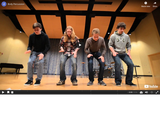
Video "Body Percussion"

French Vocabulary Audio Clip Enjoy your meal
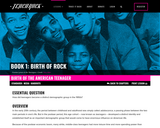
In this lesson, students will investigate how teenagers became a distinct demographic group with its own identity in the postwar years, and, in turn, how their influence helped push Rock and Roll into the mainstream. In so doing, they helped secure Rock and Roll's place as the most important popular music of the 20th century.

In this lesson, students will examine the emergence of the teen idols in the late 1950swith a particular focus on Dion and the Belmontsto understand how mainstream culture promoted the image of the "good citizen" teen during an era of increased anxiety surrounding youth culture. Students will listen to recordings of Dion and the Belmonts' "A Teenager in Love," as well as Dion's later recording "The Wanderer," in addition to viewing a 1958 instructional film outlining school dress codes, a 1953 trailer for The Wild One, a selection of teen magazines, and performances by Jerry Lee Lewis and Connie Francis.
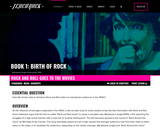
In this lesson, students assume the role of entertainment industry professionals responsible for marketing a selection of movies from the early Rock and Roll era. Following an examination of trailers, posters, newspaper articles, and the Motion Picture Production Code of 1930, students will present to the class on the various stakeholders that helped shape the way Rock and Roll culture was introduced to mainstream movie audiences in the 1950s.
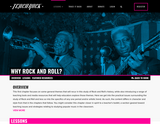
In this lesson we explore one song Chuck Berry's "Johnny B. Goode," released on Chess Records in 1958 and suggest several analytical frameworks in which one can deepen one's understanding of the song: using a listening template; using a timeline to understand a song's historical context; understanding Rock and Roll as a visual culture; understanding Rock and Roll as performance; understanding Rock and Roll as a literary form; and understanding the industry and technology of Rock and Roll. Of course, what we do with "Johnny B. Goode" can be done with any song. The objective is to understand a recording in the most complete way possible.
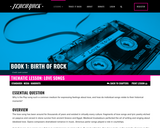
In this lesson, students will listen to examples of love songs from several musical styles and historical moments. The activities are designed to explore how music and lyrics work together to express different sentiments toward love and relationships.
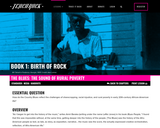
This lesson focuses on the music through which those hardships were expressed and on the daily lives of southern blacks in the sharecropping era. It is structured around an imagined road trip through Mississippi. Students will "stop" in two places: Yazoo City, where they will learn about the sorts of natural disasters that periodically devastated already-struggling poor southerners, and Hillhouse, where they will learn about the institution of sharecropping. They will study a particular Country Blues song at each "stop" and examine it as a window onto the socioeconomic conditions of the people who created it. Students will create a scrapbook of their journey, in which they will record and analyze what they have learned about the difficulty of eking out a living in the age of sharecropping.
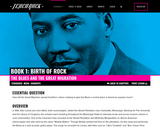
The repercussions of the Great Migration are far-reaching. Today, much of the restlessness and struggle that the Blues helped to articulate in the Migration era remains central in other forms of American music, including Hip Hop. In this lesson, students look to Muddy Waters and Howlin' Wolf as case studies that illustrate why African Americans left the South in record numbers and how communities came together in new urban environments, often around the sound of the Blues.

In this lesson, students will trace some of the technological developments that made the electric guitar possible. Using a variety of Internet sources, students will conduct research into some of the early models, including the hollow-bodied Gibson ES-150, introduced in 1936, and the Fender Telecaster, the first mass-marketed solid-body electric guitar, introduced in 1952, at the dawn of the Rock and Roll era. They will explore not only how these instruments transformed the Blues sound, but how they laid the groundwork for the development of the electric guitar as an essential Rock and Roll instrument.
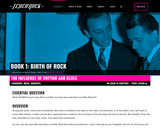
The subject of this lesson is the music of which Fats Domino speaks: the R&B of the pre-Rock and Roll era.
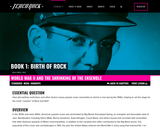
This lesson explores the transition from the Big Band era of the 1930s and 40s to the rise of smaller ensembles and featured singers in the years following World War II. Students will analyze and draw conclusions from primary sources including wartime rationing posters, archival photographs, and Billboard chart lists. Video clips featuring the music of Glenn Miller, Frank Sinatra, Nat King Cole, and other artists provide students with visual and musical evidence to discuss factors that led to the shrinking of popular music ensembles and the emergence of genres that inspired Rock and Roll artists in the 1950s.
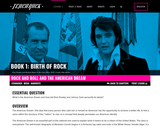
In this lesson, students will explore the persistence of the American Dream by juxtaposing the writings of Horatio Alger Jr. and John Steinbeck with the artistic output of Elvis and Cash. If the American Dream as an ideology has always been a balance between myth and reality, these artists, and Rock and Roll culture more generally, gave the myth something real. Through a survey of literature, album art, songs, television news reports, film, and other materials, students will examine how these artists became symbols of the American Dream for their many fans.
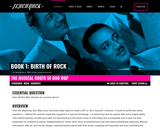
Doo Wop's musical and social roots point to a long history of vocal harmony in American culture, particularly in African-American communities. Social singing provided entertainment in barbershops, bars, schools, churches, theaters, and other communal spaces. Some of the musical precedents students will consider in this lesson include the barbershop quartets that flourished from the 1890s through World War I; the Pop vocal groups such as the Mills Brothers that topped the charts in the 1920s, 30s, and 40s; and the Gospel singers who made harmonizing a spiritual practice throughout the early twentieth century.
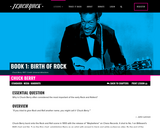
In this lesson, students will analyze several of the elements that combined to make Berry such an important and influential artist. They will examine his pioneering guitar riffs, his carefully crafted lyrics that spoke directly to the emerging market of white, middle-class teen listeners, his blend of R&B and Country and Western influences, and his energetic performance style, which helped pave the way for a generation of guitar-playing showmen.

Through a comparative analysis of magazine advertisements, graphs, and statistical data, students will discuss the factors that led to the surge in guitar sales in postwar America. Live performances by Jerry Lee Lewis and the Beatles serve to highlight the role of piano versus that of the electric guitar in defining the look and the sound of the Rock and Roll band.
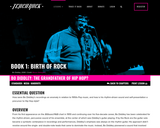
In this lesson, students explore the particularities of Bo Diddley's music, contrasting it with other artists of the late 1940s and early 50s, specifically John Lee Hooker's "Boogie Chillen," Chuck Berry's "School Days" and The Chordettes' "Mr. Sandman." Through comparative listening, students will determine elements of Bo Diddley's style, including his emphasis on rhythm and lyrical content, and examine how his recordings compared with the popular music of his peers. In groups, students watch 1980s-era footage of Grandmaster Flash and the Furious Five, engaging in a guided discussion to draw conclusions as to whether they believe Bo Diddley can be viewed as a precursor to Hip Hop.